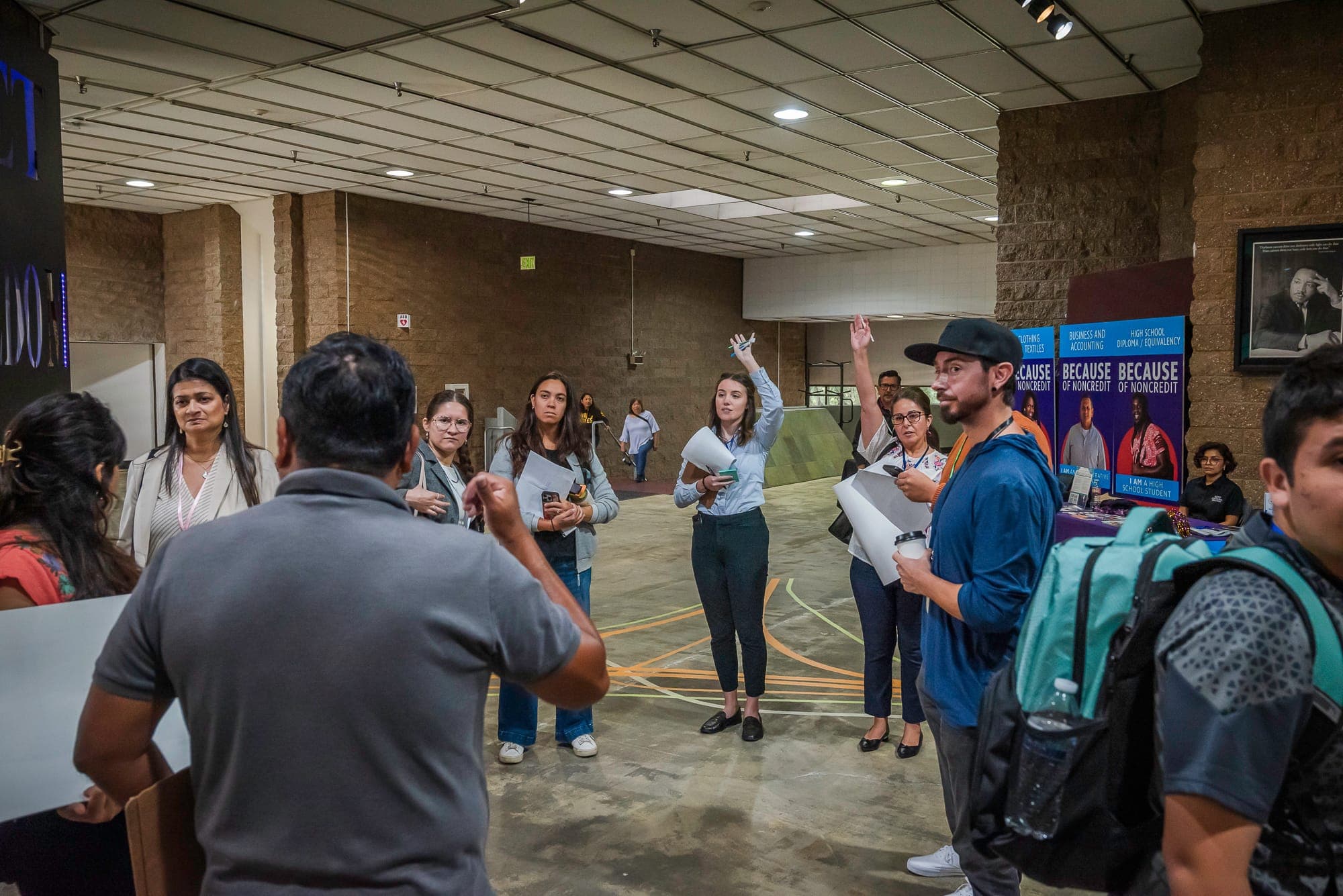
Application open
Community Connectors
Helping small and mid-sized communities repair the damage of divisive infrastructure. Applications are due by September 11, 2025, at 11:59 p.m. Find the application and eligibility details and requirements are below.
Application requirements
Requirements for participating communities:
- Community size: Teams representing cities between ~50,000 and ~500,000 in population.
- Joint applications and team composition: All applications must be a joint endeavor between a local government unit and a community-based organization or similar organization that represents the affected residents or neighborhood(s). Teams consisting only of local government will not be considered.
- Other team notes: Teams are not required but are strongly encouraged to meet regularly (bi-weekly, etc) outside of the required CSLA training meetings to build trust, strengthen partnerships, and create the foundation required for a successful project. (SGA staff will be available to attend some of these additional meetings, but we have found that regular and ongoing communication amongst the team is vital for project success.)
- Demonstration project requirement: Selected communities must commit to designing and installing a temporary street safety demonstration project for a minimum of one month.
- Infrastructure type and identification: While final site decisions will be made during the cohort, the team must identify their preferred corridor or intersection(s) in their application, which must be owned and controlled by one of the participating government units (in order to implement the temporary demonstration project). State-owned roadways are not eligible for this program unless the city manages or operates them independently.
- Eligible entities: Government agencies (including US territories), tribes, non-profit community-based nonprofit organizations, and academic institutions are eligible. Each team must identify a public and community-based org as co-leads on the application.
- In-person convening: Teams are required to be able to participate in an in-person training in Oct-Nov, 2025 in one of the three selected cities. We will also be looking for a host city, which can be noted on the application. Travel and hotel costs will be covered for a subset of each team (~5-6 people) traveling to the location. (All members of the host team would be expected to participate.)
- Eligible funding uses: Up to $25,000 will be given to each community for the demonstration project and their time. A portion of this money (at least $5,000) is reserved to compensate the CBO co-lead for their time.
- Ineligible funding uses: According to Robert Wood Johnson Foundation policy, funds may not be used “to support clinical trials of unapproved drugs or devices, to construct or renovate facilities, for (permanent) capital costs of any kind, for lobbying-related activities and expenses, for political activities, or as a substitute for funds currently being used to support similar activities.”
- Assent to participate in evaluation: An independent research group selected and funded by RWJF will conduct an evaluation of this program. As a condition of accepting this assistance, grantees agree to participate in the evaluation, which will be concurrent with the program.
- Reporting requirements: Members of the cohort will be expected to provide narrative and financial reports on request. Teams will be required to participate in periodic meetings and provide interviews and quotes for an SGA case study at the end of the project.
- Photos and media. SGA will be leaning on the teams to document their projects through photos and potentially video, which can be provided on request for use in SGA case studies and other promotional materials.
Selection criteria:
- Geographic diversity: Smart Growth America will attempt to select projects that span the country and a range of population sizes within the stated eligibility.
- Need, with a priority on lower-capacity communities: Priority will be given to teams/projects that place a clear emphasis on bringing measurable benefits to communities that are low-income and/or low-capacity, with a history of disinvestment and damage from past infrastructure decisions—particularly communities of color.
- A connection to urban renewal or past history of harm and division: Our ideal project is one with a connection to urban renewal, 1960s road-building, or other intentional efforts to divide and harm communities that were predominantly low-income or communities of color. (See the case study below for an example.)
- Readiness and commitment: Cities need to be fully committed to designing and implementing a temporary project on a dangerous road or street that they own and control.
- Teaming arrangement and partnerships: Ideal teams will include public agencies and community-based organizations and advocates (and other stakeholders) to scope and advance these projects, while building partnerships for the future.
Timeline:
- September: program kick-off with introductory calls
- October: virtual trainings to introduce Complete Streets and quick builds and to build connections within the cohort
- November: in-person training at one of the three selected cities, to conduct a walk audit and begin initial design, and virtual trainings on engagement, data collection, and communications planning
- December: teams conduct community engagement and outreach to finalize project design
- January-February: virtual presentations from each team on their final design, virtual trainings on project launch and maintaining momentum after a quick build, and teams procure materials for demonstration projects
- March-May: quick-build demonstration projects installed and evaluated
- May: final project presentations from each team at virtual session
Read this story of an ideal project type - Harrisonburg, VA
Harrisonburg, Virginia was selected for a previous round of the Community Connectors program where 15 communities received capacity building subgrants and wraparound technical assistance to develop and advance ambitious projects to restore the damage of past infrastructure decisions. One of Harrisonburg’s final projects (a temporary demonstration project) helped inspire this year’s specific focus on divisive or dangerous roadways.


1350 I St NW Suite 425 Washington, DC 20005
[email protected]© 2025 Smart Growth America. All rights reserved
Site By3Lane Marketing






